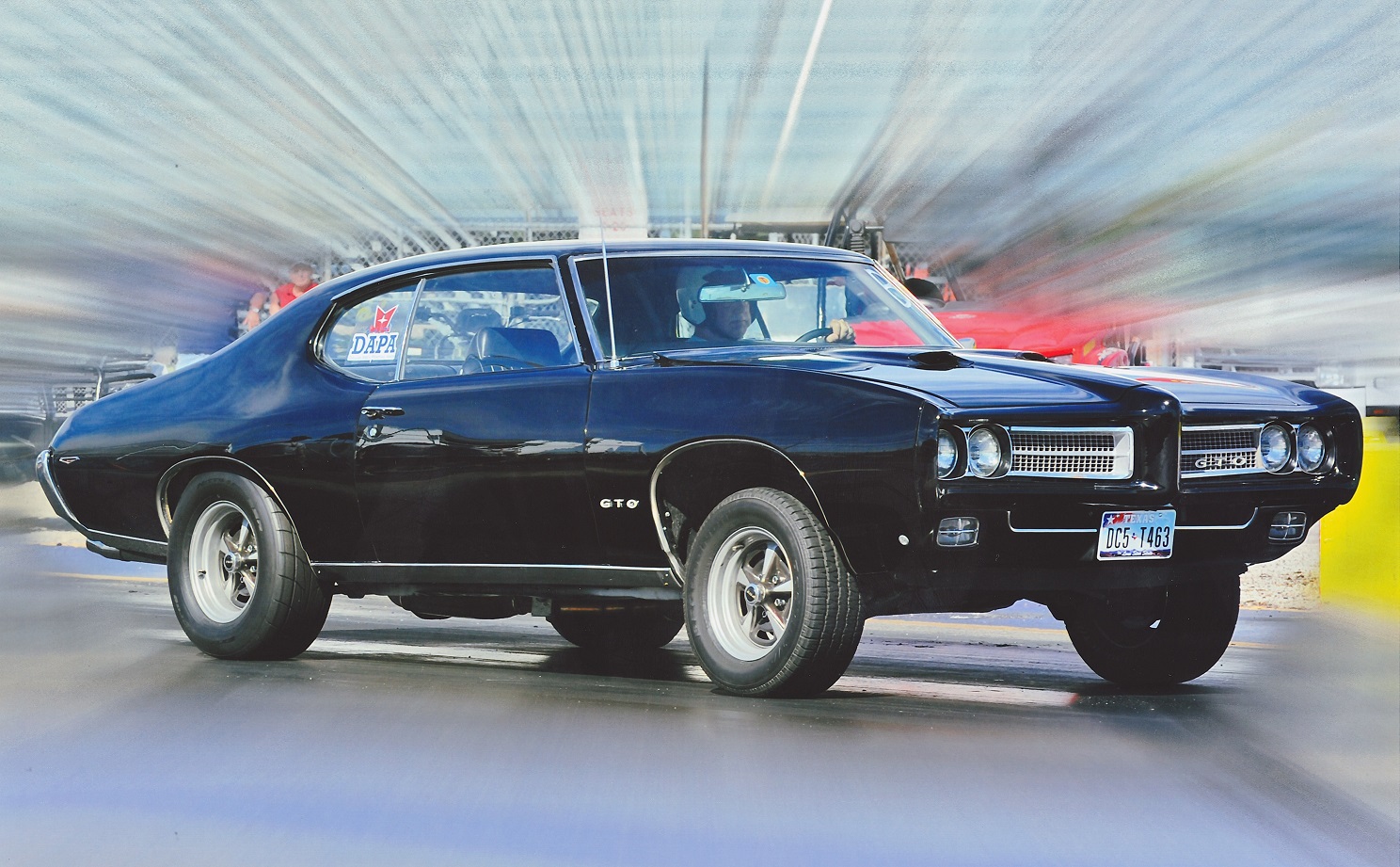Building a Strong Street Machine – Part 14: Intake Manifold Tests
- March 16th, 2010
- Posted in Jim Hand: Building A Strong Street Machine . Technical Articles
- By D.A.P.A
- Write comment
“Pontiac Intake Manifold Tests on a well tuned stock type 455 in a 3900# vehicle.”
Note; The following summary of intake manifold tests was prepared prior to the formal article in “High Performance Pontiac” magazine published several years ago.
After testing six different manifolds, I have began to understand the Aftermarket’s definition of “High Performance”. It generally means a series of engine modifications that allows/causes the engine to run at much higher RPM. It does not necessarily mean increased performance. Example: A 350 engine is modified with heavy duty internal parts to allow it to run at 6400 RPM without exploding. A high RPM cam is added along with a high RPM (High Performance) manifold. The engine will now develop more horsepower than stock but at about 1500 higher RPM. When installed in a lightweight vehicle with deep gears and a loose converter, it will provide the performance level expected. Unfortunately, when installed in a streetable 3700# Pontiac, it will be a real bow-wow because of the lack of low RPM power. However, the engine is now a genuine ”High Performance” unit. In contrast, my 455 engine that accelerates 4050# of driver and car to mid 12’s at 109 MPH is not a classic “high performance” engine! It is a very well tuned stock type engine because it is shifted at 5400 RPM and uses primarily low RPM components.
After I understood the above, the test results obtained with the High Performance manifolds began to make sense. Of the five Aftermarket units tested, only the Edelbrock Performer, which is sold as a stock replacement, ran as well as the stock cast iron unit on this limited rpm test vehicle. The other four, sold as “High Performance” caused a loss in 1/4 mile performance, as well as losing throttle response. Why?
The ”High Performance” manifolds are designed to allow much greater air flow and to accomplish that, they have larger diameter and shorter length runners, and larger plenum areas. Most are also single plane (plenum) units. These design characteristics hurt the air/fuel mixture velocity at low RPM and the carburetor metering accuracy, which in turn, adversely affect throttle response and low speed power. Since my wagon is setup to need the high torque/power from about 1400 to 5200 RPM, and the engine does not operate long enough in the RPM range for which the HP manifolds are designed, the predictable happens; Loss of performance. Following are the actual test results. Each test was initiated with a stock cast iron manifold installed and at least two runs were made to get consistent times. Then, the manifold to be tested was installed at the strip. (The water crossover was removed from all manifolds to allow this change at the strip.) Nothing else was changed. The transmission is setup to shift automatically at 5200. The only difference in the engine was the manifold.
The results are presented as (gained) or (lost) in reference to the stock cast iron manifold. With it, the wagon ran in the range of 12.5 to 12.75 at 107 to 109.
| * Pontiac Aluminum HO | Lost .08 sec. and ,4 MPH |
| * Edelbrock Performer | No change in ET or MPH |
| * Edelbrock Performer RPM | Lost .05 sec. and .5 MPH |
| * Edelbrock Torquer II | Lost .0l sec. and .1 MPH |
| * Edelbrock Torquer | Lost .29 sec. and 2.85 MPH |
| * Holley Street Dominator | Lost .25 sec. and 1.9 MPH |
Note: None of the Offenhouser manifolds would fit due to the HEI. None of the single plane specialty manifolds from various sources were tested because it was obvious they would cause a performance loss on this low RPM torque engine.
So what manifold should you run? It depends on what rpm you plan to shift your engine. As the stock type intakes are designed to operate from idle to 5000-5500, they will always provide the best total power in that load range. The higher performance units are designed to operate to higher rpm, and they will degrade low rpm power. if you make modifications such that the engine does not see much of a load until 2500 or higher, and you plan to shift the engine at 5500 or higher, the performance intakes may help dgar strip performance. However, they will never operate as well at low rpm and in normal driving. The RPM and Torker II will provide the best balance of low and high rpm power of the performance intakes, but will not idel/drive as well as the stock and Performer.
My wagon has remarkable traction which allows for very consistent runs, and there is no question about the above test results.

